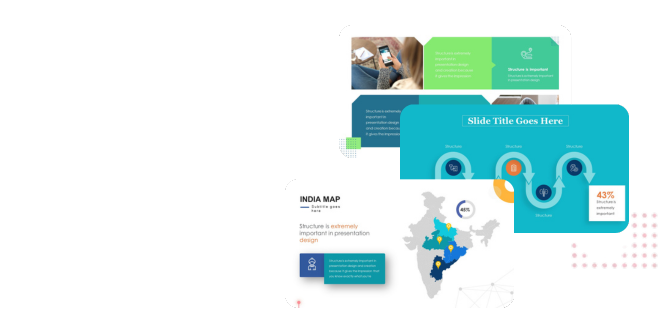In the bustling digital age, grabbing audience attention is tougher than ever. Creative storytelling has become vital for marketers to captivate, inform, and motivate their audience. But what is creative storytelling, and how can it be effectively used in marketing today? In this blog, we’ll delve into the aspects of creative storytelling and its crucial role in modern marketing.
Grasping the Art of Creative Storytelling
Creative storytelling is the art of using narratives to convey a message in an engaging and unforgettable way. Unlike traditional marketing messages that focus solely on product features, creative storytelling weaves together emotions, characters, and plots to create a deeper connection with the audience.
The essence of creative storytelling lies in its ability to transform mundane information into captivating tales. Take, for example, brands like Coca-Cola, which use simple, yet impactful stories centered around universal themes like happiness and togetherness. By crafting relatable characters and implementing visual storytelling techniques, brands can evoke emotions that lead to stronger brand recall and loyalty.
From the dawn of time, humans have been wired to respond to stories. Our brains process stories differently than straightforward facts and figures. A compelling narrative taps into our emotions and creates a sense of empathy. This intrinsic connection is why brands are increasingly turning to storytelling in marketing to convey their value propositions and connect on a personal level with their audience.
Fundamentally, creative storytelling isn’t just about being imaginative; it’s about being meaningful. It involves understanding the brand’s core message and crafting it into a narrative that resonates deeply with the audience. According to research, narratives significantly enhance the retention and recall of information, making storytelling an invaluable tool for marketers.
The Importance of Emotional Engagement
In a world saturated with information, emotional engagement is critical to standing out. Stories that tap into emotions can inspire, challenge, and motivate audiences far more effectively than dry, data-driven messages. By creating emotional connections, brands can build loyalty and encourage advocacy.
Consider the impact of an emotionally compelling narrative like the one used in Disney’s advertisement featuring a duckling inspired by Donald Duck. The short film takes viewers on an emotional journey and culminates in a heartwarming reunion at Disneyland, brilliantly illustrating the emotional pull of creative storytelling.
Humans are intrinsically emotional beings, and we are drawn to stories that reflect our own experiences and emotions. This connection is what transforms a viewer into a loyal customer. Emotional stories cut through the noise, making them 22 times more memorable than standalone facts. By tapping into these emotions, brands can foster a sense of loyalty that extends far beyond a simple transaction.
Elements of a Compelling Story
A compelling story typically includes relatable characters, a clear plot, and a significant conflict or challenge. The resolution of the story often highlights the brand’s values or benefits in a subtle yet powerful manner. These elements work together to create a narrative that resonates and sticks with the audience.
Let’s break down these elements further. Relatable Characters: Characters serve as the heart and soul of a story, whether they are people, animals, or even anthropomorphized objects. They provide a focal point for empathy and emotional engagement. Successful brands understand this and create characters that audience members can see themselves in, or sympathize with.
The Plot is the structure that propels the narrative forward, weaving various events into a cohesive sequence. Good plotlines are complex enough to intrigue but simple enough to follow, engaging the viewer’s attention and curiosity. Plots often revolve around a central conflict or challenge, creating tension and interest.
Conflict and Resolution: At the core of any compelling story is a conflict that needs resolution. It could be a problem the characters are trying to solve or an obstacle they need to overcome. The resolution often subtly showcases how the brand’s product or service can provide a solution, reinforcing the brand’s values and benefits.
Examples of Creative Storytelling in Marketing
Several brands have successfully leveraged creative storytelling in their marketing campaigns. For instance, Dove’s ‘Real Beauty’ campaign and Nike’s ‘Just Do It’ series have used powerful narratives to connect with their audiences on a deeper level. These campaigns go beyond promoting products; they tell stories that inspire and resonate.
One standout example is Coca-Cola’s AR campaign in Mexico. When customers pointed their phones at a Coke can, they were treated to 12 stories that revolved around positivity and sharing. This innovative use of technology created memorable and interactive experiences that reinforced Coca-Cola’s brand image and values.
Another powerful example is the ‘Eva Stories’ campaign. It utilized Instagram Stories to recount the life of Eva Heyman, a Jewish girl during the Holocaust. This initiative not only educates but also engages a younger generation on a historical topic, showcasing the transformative potential of storytelling in raising awareness and driving engagement.
Tips for Effective Storytelling in Marketing
To create effective stories, marketers should start by understanding their audience’s values and pain points. Authenticity is crucial—stories should reflect genuine experiences and emotions. Additionally, using various formats like videos, blogs, and social media posts can help reach a wider audience and make the stories more impactful.
Understand your audience: Knowing your audience’s demographics, interests, and pain points allows you to create stories that resonate personally. Use market research and analytics tools to gather insights that can drive your storytelling strategy.
Be authentic: Authenticity is a cornerstone of effective storytelling. Today’s audiences are savvy and can quickly sense dishonesty. Sharing real-life experiences, customer testimonials, and behind-the-scenes content can create a more authentic brand image.
Leverage multimedia: Using various formats can bring stories to life in engaging ways. Videos can convey emotions in a dynamic manner, blog posts can explore in-depth details, and social media posts can capture those fleeting moments. By embracing a mix of mediums, you can ensure that your story resonates with a wider audience and keeps them engaged.
Engage and Interact: In today’s digital world, there are countless ways to connect with your audience. Invite them to share their thoughts on your stories by asking questions, running polls, or organizing live sessions. By incorporating interactive content, you’ll foster a sense of community and make the storytelling experience feel richer and more engaging.
Measuring the Impact of Storytelling
It’s important to assess how well our storytelling is working. By looking at key performance indicators (KPIs) like engagement rates, social shares, and conversion metrics, we can gain valuable insights into how our stories are connecting with the audience. Taking the time for continuous evaluation and refinement helps us keep our storytelling strategy effective and up-to-date.
To measure the influence of storytelling, begin by pinpointing the appropriate key performance indicators (KPIs). Engagement rates—like likes, comments, and shares—are great indicators of how engaging the content is for your audience. When your story gets shared on social media, it increases its reach and connects it with a larger audience.
Conversion metrics, like click-through rates (CTRs) and conversion rates, help us understand how well a story encourages people to take the actions we want—whether that’s signing up for a newsletter or making a purchase. By examining these metrics, we can gain valuable insights into how storytelling influences our ability to meet business goals.
Use analytics tools to collect data and gain insights. Regularly assessing your storytelling campaigns can uncover trends and highlight areas for enhancement. Staying flexible and responsive in your strategy enables you to adjust and refine your stories based on what truly connects with your audience.
The Power of Creative Storytelling in Marketing
Creative storytelling isn’t just a trendy phrase; it’s a transformative approach for brands aiming to connect with their audience. By weaving narratives that strike an emotional chord, marketers can forge deep connections and inspire genuine engagement. As you begin your storytelling journey, keep in mind that being authentic, embracing creativity, and truly understanding your audience are essential for making your stories memorable.











